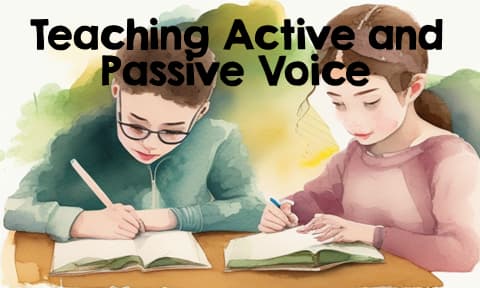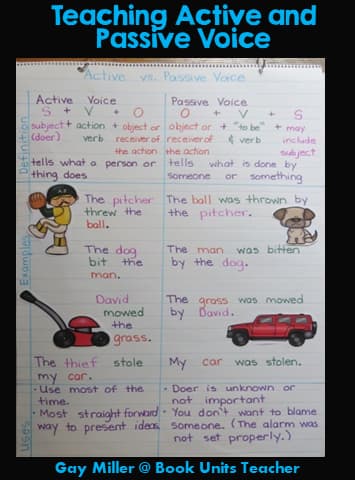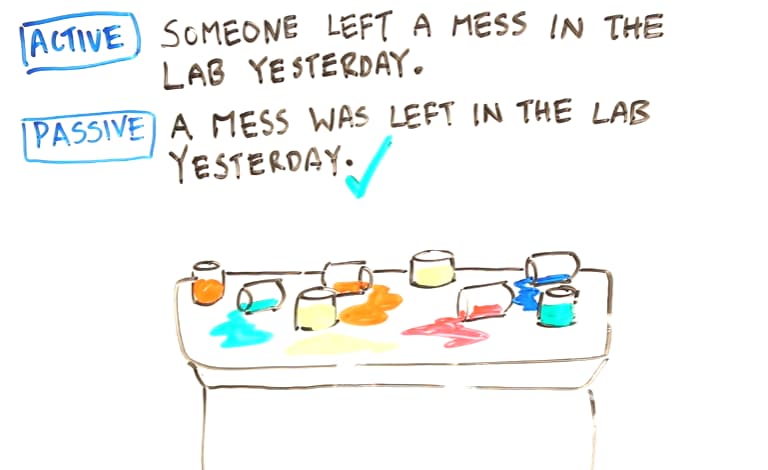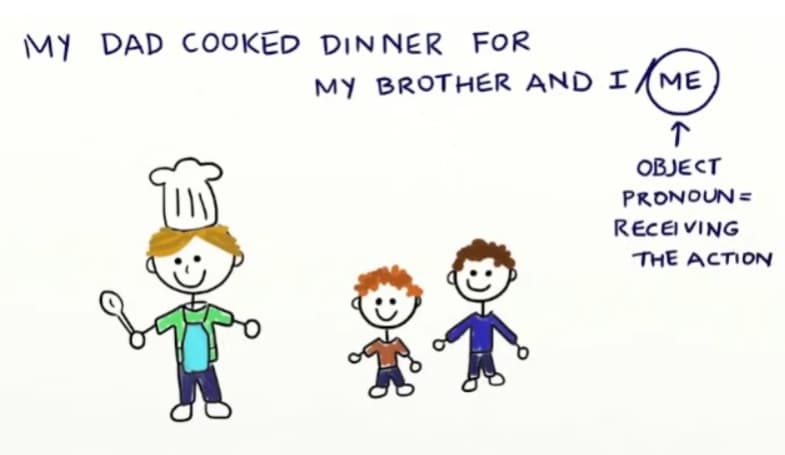
Developing strong writing skills in upper elementary students isn’t just beneficial—it’s game-changing. One important area that helps build clarity and structure in their writing is understanding the active and passive voice.
This post will walk you through the difference between these two writing styles, with hands-on activities to boost engagement and confidence. Grab the handout and let’s jump in!
Activities for Teaching Passive and Active Voice
Activity 1: Teach the Rules

Teaching students the rules associated with voice usage is essential to lay a solid foundation. I like to use an anchor chart as it provides a reference for students to use while studying and learning.
- Active voice = the subject does something
- Passive voice = something is done to the subject
- The subject of the sentence performs the action.
- Active voice makes sentences more direct, clear, and concise.
- It is often used in persuasive writing or when emphasizing the actor or the action.
Passive Voice
- The subject of the sentence receives the action.
- Passive voice is used when the actor or agent is unknown, unimportant, or should not be emphasized.
- It is often used in scientific or technical writing or when emphasizing the action rather than the actor.
Activity 2 – Lights, Camera, Grammar
To help students learn about active and passive voice, we recommend using instructional videos to reinforce the concepts. The following videos provide helpful explanations:

Video 1 explains the different voices and provides examples. (Duration: 6:05)

Video 2 provides a step-by-step guide for converting sentences from passive to active voice. (Duration: 3:24)
Quick, snappy, and full of aha moments.
Activity 3 – Sorting Activity

Nothing gets students thinking like a sorting challenge. Provide sentence cards—16 in total—and ask students to sort them into “Active” and “Passive” categories.
Laminate the cards for reuse. Toss in a couple Solo cups for the piles, and boom—grammar sorting station achieved.
Activity 4 – Rewrite It

For further practice, Activity 4 provides a handout and cards. Students engage in rewriting passive voice sentences into active voice sentences. This activity reinforces their understanding of the concepts while allowing for creative expression.
Activity 5 – Quiz Time
Check students’ understanding of this skill with a quiz covering identifying and transforming passive and active voice sentences. The printable quiz tests two skills. In the first exercise, students identify sentences as active or passive. In the second exercise, students rewrite passive voice sentences into active voice sentences.
With these interactive activities (and a handy handout for support), your learners will gain confidence in their writing choices.
And remember, it’s not about choosing one voice over the other—it’s about knowing when each one shines.
See the product that inspired this post.
Are you looking for a fun way to teach writing skills? This series teaches narrative, informative, and opinion writing with animated short films your students are sure to love!



